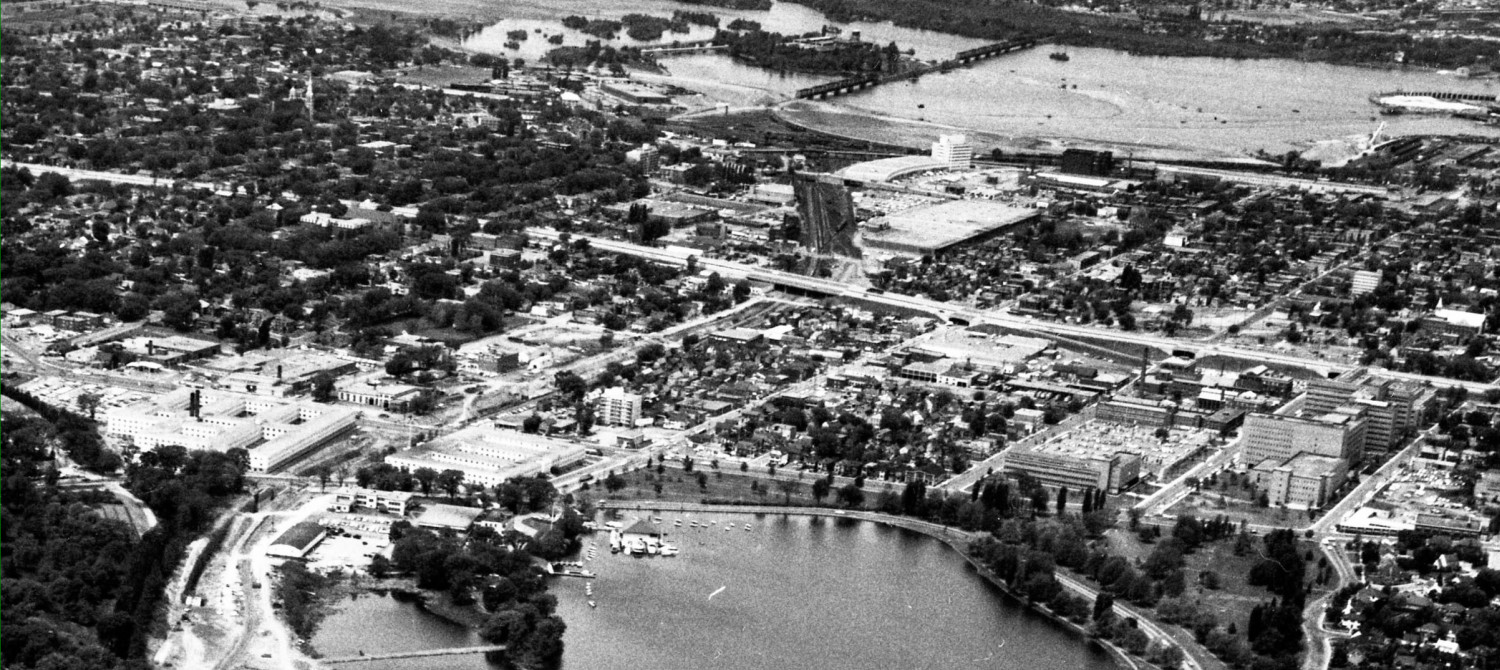Proponents of ‘smart growth’ and higher density cities usually cite as benefits the smaller ecological footprint and lower cost of servicing higher density mixed use urban areas compared to suburban growth.
I wonder just how true this is. In my neighborhood, on the west side of the urban core, it is possible to walk to multiple employment centres. Shopping is a bit of stretch to the Rideau Centre, and for groceries, well they do call it a ‘grocery desert’ for a reason. However, Loblaws in Westboro does deliver and with a family of teens that is well worth while (I have never had a car).
But over the last decades, noticeable changes have occured in our inner city neighborhood. Some family housing has disappeared, converted by developers, residents, and public agencies into apartments. The population of children evaporated, schools closed, although there seems to be a bit of a mini-boom of kids right now, I hope they stick around to go to school here rather than in suburban portables (schools in the Glebe get renovated, in lower income neighborhoods like mine they get closed). The population of elderly has shrunk drastically, driven out of their homes by high taxes. When retired on a moderate income, $3 – 4k average property taxes takes a huge hit.
But back to densification and smart growth. My question is, do the new residents of these buildings show the same public transit and economic characteristics of the ‘traditional’ residents?
Consider a theoretical urban professional who moved into a downtown condo tower. Has a car in the building garage. Maybe works in Kanata. Has friends in the ‘burbs. Has a cottage/second home/chalet at a ski resort or recreates frequently at up scale resorts, here and abroad. Has a spouse with independent employment characteristics and demands. Hasn’t this household just relocated an energy-intensive suburban lifestyle to the inner city? Are these high income incomers behaving the way traditional inner city residents do? Maybe, location is not the determining factor, but income is. Moving in high income people may just relocate their old lifestyle.
It should be easy to find out. Count the cars leaving the garages of a few buildings that are two to five years old. Count the pedestrians leaving the front door. Survey some residents. If the inhabitants adopt the urban behaviour desired in the smart growth model, good. If they don’t, then why are we disrupting and / or changing the urban neighborhoods that residents like, to make them more suburban by transplanting suburbanites? Isn’t it worth knowing?


Eric – I am not sure if income is a good predicator. To cite examples, I moved into the Glebe with my wife precisely because we did not want the suburban lifestyle, despite a comfortable income. We have a single car, but most days it just sits there unused as I cycle to work and she works from home.
I personally think that the sort of people who move to infill are pretty desperate to abandon the awful suburban lifestyle. The key is to have a neighburhood that can support a “traditional” lifestyle. Obviously some form of grocery store between Hartmans and Superstore would be key.
Chris: I don’t believe for a moment that everyone moving into downtown neighborhoods has uniform characteristics. Planners and politicians have identified the urban lifestyle as “good”, and encourage more people to move in. But my question remains: do these incommers live the same lifestyle as their neighbors or as the suburban areas some come from. It would not be difficult to survey some high rise condos to see if, after an adjustment period, the program is working and these incomers adopt a more urban, walking, lifestyle, or just importing a suburban lifestyle to the downtown. -Eric
Eric, I think there’s more to life than commuting back and forth to work. And there’s more to life than cars. I work out in Kanata, and my wife works out in Nepean. Even though we live downtown, our one car gets a workout every day.
Urban is good for many more reasons than just “cars are bad” If you go out to Kanata, and watch the beautiful forests and farm fields being ripped up for more matchstick developments, or 1/2 acre lots, you might see that.
I’m proud of living downtown, and I’m proud of my car. Having a car and using it does not negate all of the other environmental benefits of living downtown.